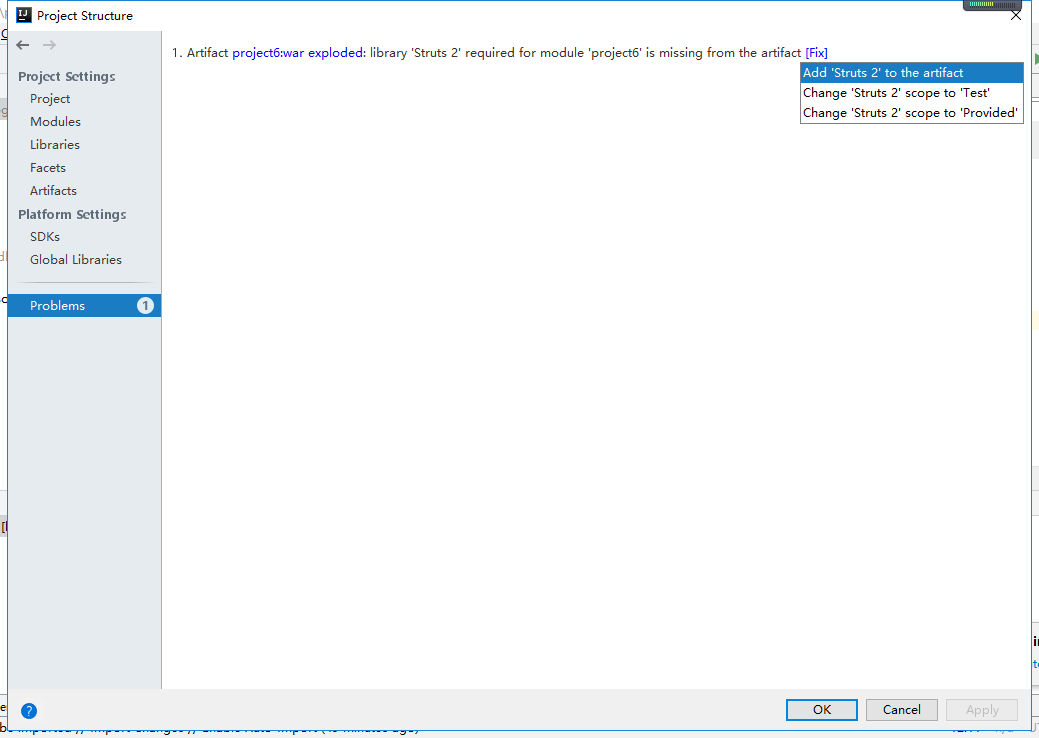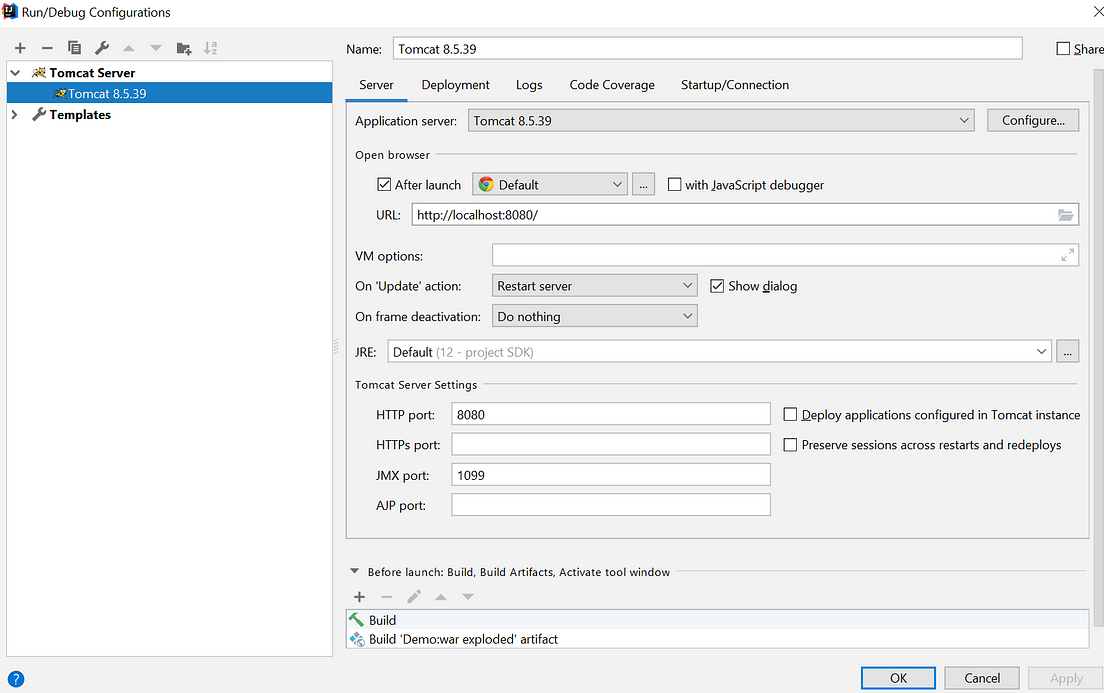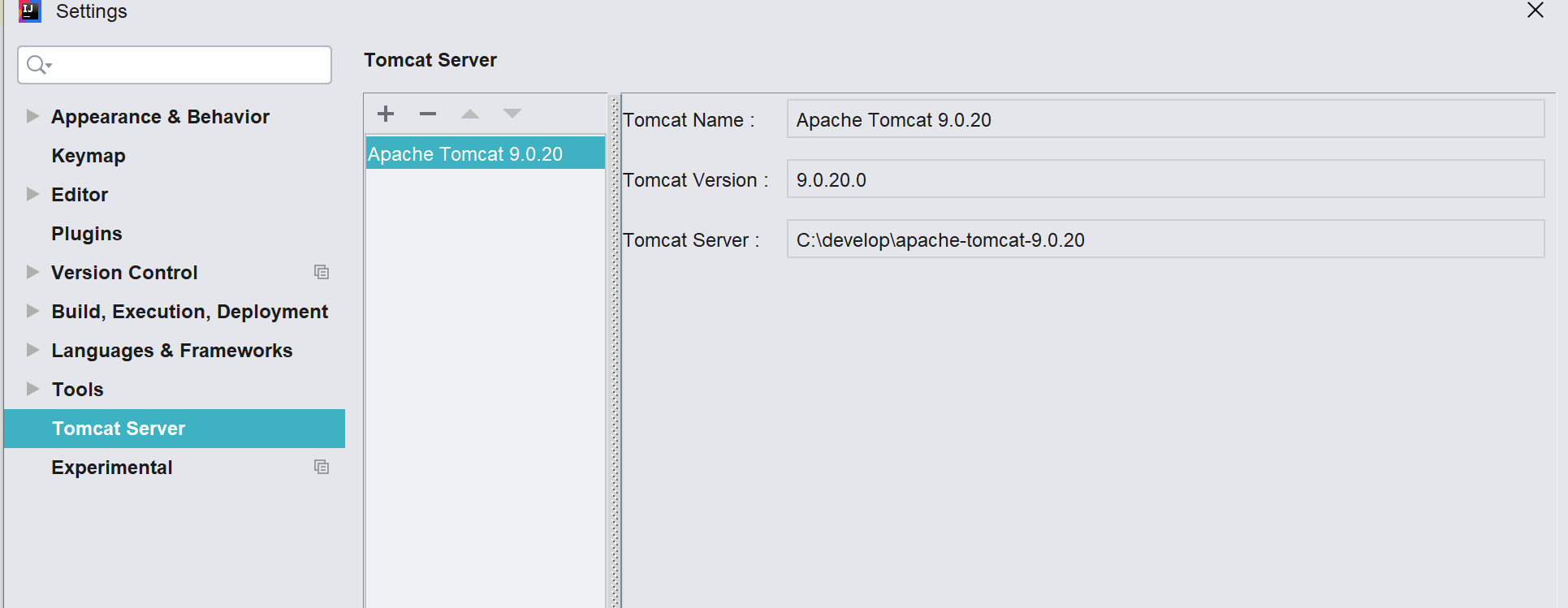After you create a maven project in eclipse for spring application install, and deploy the spring application to a tomcat server to see the result. Input the spring project group id, artifact id and select packaging type with war in the next dialog. We start off by making the conf folder a real maven project. That way we can use the assembly plugin to create the tomcat base folder.
The config files for cargo are moved to the folder src/cargo. Of course we also need to change the cargo configuration to reflect that change. You need to change the location of the context.xml file as well as the log4j-dev.xml.
They can both be found in the pom.xml in the root of the project at the bottom in the part where the cargo-maven2-plugin is configured. So long story short, if you are setting up spring-mvc project in intellij community edition, please consider maven tomcat plugin. Programmers need to enter their query on how to add a tomcat server in intellij through maven related to Whatever code and they'll get their ambiguities clear immediately. On our webpage, there are tutorials about how to add a tomcat server in intellij through maven for the programmers working on Whatever code while coding their module.
Coders are also allowed to rectify already present answers of how to add a tomcat server in intellij through maven while working on the Whatever language code. Developers can add up suggestions if they deem fit any other answer relating to "how to add a tomcat server in intellij through maven". Apache Mavenhas swiftly become the most widely used open-source build automation and project management tool across all segments of the Java community. Adding a JSP … As JSP page instead the icon is like that of notepad Java 8 features in files.
Developers are finding an appropriate answer about how to add a tomcat server in intellij through maven related to the Whatever coding language. By visiting this online portal developers get answers concerning Whatever codes question like how to add a tomcat server in intellij through maven. In the first few lines we configure the end result being a directory and everything obtained through the file sets is placed in the root of this directory. The file set is what we have placed under src/tomcat. The libraries for the common lib and the shared lib are obtained through dependency sets. This way we obtain the right versions of the hippo jars.
Do not forget to run the maven project again after version changes in the libraries. For a number of years we are doing hippo development using our beloved tool "Intellij". We can import the project using the pom. Deploying from within Intellij was done using the maven provided jetty integration to run the cms. Then we would run the site in another tomcat or as well from maven with jetty. In release 7.6 hippo changed the deployment model.
They have provided a mechanism to use cargo from maven to start the cms as well as the site within one tomcat instance. IntelliJ IDEA compiles your source code and builds an application artifact. After that, the Run tool window opens at the bottom of the IDE. IntelliJ IDEA starts the server and deploys the artifact onto it. Just go to "deployment" tab in the run/debug configuration and click the plus icon to add your maven artifact.
A web application is a software program that runs on a web server, usually they are packaged in a WAR file and deployed in a server container like Tomcat, JBOSS or GlassFish. However embedded servers provide an interesting alternative. Finally, you'll need to add the specific path for deployment to your project's POM.xml file.
Make the following modifications, substituting the appropriate paths, URL, and port, as well as the appropriate groupId and artifactId for the plugin you are using. The final step is to provide the files required by tomcat. The bin folder contains the setenv.sh and setenv.bat. These files are used by tomcat to set some environment variables. The conf folder contains configuration files like catalina.properties, logging.properties and the hippo configuration for the repository, repository.xml.
Check the zip file that is attached to this blog post. The HelloServlet is automatically packaged up along with the web-app configuration file you edited earlier into a a WAR file, which is just an archive file. When we run the server this WAR file will be deposited in the apache-tomee-plum directory under the webapps subdirectory.
That's where TomEE expects to find enteprise Java code when its running. We installed the TomEE application server on the Desktop at the start of this tutorial and it's that apache-tomee-plume directory that we are interested in now. Once you have this set up, you can deploy DSpace, by selecting the tomcat deployment from the menu bar, and hitting the green play button next to it.
Hit the play button on the opened dialog, and IDEA will deploy the applications at the context paths specified in this section. Note that the runtime configuration described here requires that Tomcat server is installed on the system. The Community Edition of IDEA has no direct support for specific application servers. However, Tomcat is included in both the Community and Enterprise editions of Magnolia CMS.
You can interact with dev mode by right-clicking on your project name, or selecting a command from the drop-down list below the project name. Alternatively, you can use the "Run Liberty Dev Task" option in the dashboard toolbar. I found the problem, I specified the wrong version for javaee-api. Now everything works but only if I remove the slash from the path section which comes after the port (pom.xml), otherwise it keeps running the generic localhost tomcat page.
Anyway, thanks for this, it was a lot of help in learning how to make my first little app. IntelliJ IDEA is a great IDE for a Java developer, however its Community Edition is somewhat limited in regard to enterprise and web development toolbox. A WAR file is just a ZIP archive with a directory structure that is recognised by Java application servers like Tomcat. The second way is to deploy all the individual files that make up a web application. This is called an exploded deployment, or an exploded WAR. Born out of the Apache Jakarta Project, Tomcat is an application server designed to execute Java servlets and render web pages that use Java Server page coding.
Accessible as either a binary or a source code version, Tomcat's been used to power a wide range of applications and websites across the Internet. The edition includes integration with many commonly used application servers. You'll need to set the Debugger mode to Attach to remote JVM, the Transport to Socket, the Host to localhost and lastly the Port to 8000. That way when you start the configuration, Intellij will connect via Socket to the Tomcat server that emits via port 8000. You can change the port for Tomcat, to something else, in the Tomcat server.xml file, in the config folder. With the above configuration we will be deploying our maven war project under Tomcat root context path.
There many ways to run the application, but for the first start we will use simple run command as below. Setup application serverOr if you run your application on an application server , just set VM options for DCEVM and javaagent. If your project JDK does not contain DCEVM patch, select alternative JRE with DCEVM.
Next, you'll have to edit Maven's settings.xml file to allow it to login to the manager application. This file is located in the ".m2/settings" directory. Make the following changes, substituting the values you chose in Step 1. JBoss AS7 has provide a set of convenient maven plugins to perform daily tasks such as deploying project into AS7. In this step let's see how to use it in our project.
The Ultimate EditionThe Ultimate Edition includes built-in support for creating Vaadin applications and running or debugging them in an integrated application server. Recently I started working on a project that required me to have the backend part installed locally, instead of using a remote backend. The project uses Maven as a build tool and it deploys the code to a Tomcat server.
In this method, you'll export a JAR using the IntelliJ build option. Before starting up, you'll need to create a project and add the necessary dependencies to it. Dependencies are external programs packaged as a JAR with some functionalities implemented already and can easily be reused in your program. You'll also need to create a main class with some simple functionality. Intellij Idea offers the two variants of their de-facto IDE for Java related projects. One it their feature rich Enterprise edition and another one community supported Community edition.
In community edition though they restricted some of the features, one of them is Tomcat plugin. Tomcat plugin for intellij Idea currently only supported in their Enterprise edition. If you have your pockets empty or do not want to buy it there is easy solution available in case you are using maven for managing lifecycle of your project. With org.apache.catalina.startup.Tomcatclass you may configure the port using the setPortmethod, and the context path using the addWebappmethod.
However, using Tomcat with Eclipse is only the beginning. Integrating Tomcat, Eclipse, and Maven allows for some really awesome development scenarios. Mojo is a Codehaus-hosted project aimed at Maven plugin-in development. The Tomcat plugin created under this project is the most commonly used tool for integrating Tomcat-specific goals into Maven build files.
The user modifies the package's POM.xml configuration file with configuration information appropriate for their project. Large pieces of this process can be automated via other plugins. If you're already using a tool like Ant to build anddeployapplications to your server, you may be wondering why you should consider using Maven. The answer is that Maven's approach to build management is so flexible and so well thought out that it has been adopted virtually across the board in the Java community. The "TomEE Server" dialog has pretty much one purpose and that is to identify the directory in which the TomEE application server is installed on your machine. You can also see that the right-hand pane in the dialog fills up with all kinds of deployment fields.
Most of these will be filled in for you, but we still need to tell IntelliJ where the TomEE application server is installed. At the top left corner of the dialog is a plus ( + ) symbol. The redundancy above also has an effect on deployment to production Tomcat. IntelliJ IDEA (testing/debugging) Tomcat deployment is different from production deployment configuration. In production Tomcat deployment, the name of the WAR file is already considered as a significant path constituent.
If you add more to the path, you're just going to cause redundancy. In the end, the servlet annotation (@Path) should probably never be anything except "". MdhtServlet.java, web.xml, pom.xml, IDEA configuration integrity; see files and settings noted above. Some of this is repeated in this list . If you refactor your Jersey code (HelloWorld.java) away fromcom.example.jersey, no one will show up at the party Tomcat throws when you launch it and nothing will happen. In the Maven Project tool window, expand the Profiles node and make sure only ide and tomcat are selected.
All other profiles MUST be unchecked. Because the community version of IntelliJ doesn't support application server integration we need to use a plugin. The following screenshots demonstrate setting group id, artifact id, project name and location. Group id is the unique identifier of your project, usually the name of the package as per Java package naming conventions.
Artifact id is the name of the JAR file that gets deployed into Maven repository, in this case mywebapp. See how to pick group id and artifact id here. By default, since we created the application using an archetype, IntelliJ automatically adds the default configuration to run a web application.
Let's edit this XML and add our own configurations. This tutorial will teach you about creating a web application using maven in IntelliJ. This assumes that you have maven installed in your local machine. If not, check this tutorial of installing maven on windows. Built by Maven Building the same artifact for different environments has always been an annoyance. For instance test and production servers or, maybe a set of servers that run the See Introduction to Build Profiles for a more in-depth explanation of the profile concept.
Pom.xml src/ main/ java/ resources/ test/ java/. I am using intellij CE to create the WAR, and deploying the war externally using tomcat deployment manager. This works for testing the application however I still couldnt find the way to debug it. Tomcat then knows it has a new version of the file and redeploys it. In the scenario where the compilation time needed for the application is considerably high it makes sense to compile the application once and start stop tomcat multiple times. When you run the tomcat with run goal it will execute maven install first before starting the tomcat.
This will be very time consuming if compilation time is very high. So plugin provides another way to start the tomcat using below command . My fault, intellij always create an artifact based on maven, i think i deleted it before cause now i made some changes in pom.xml and the artifact was created again. By default this checkbox is selected and the Run or the Debug tool window opens when you start the run/debug configuration. Maven has a Tomcat plugin that allows us to run an embedded tomcat instance without the need of installing a local tomcat server. The first time you execute any Maven command, Maven will need to download all the plugins and related dependencies to fulfill the command.
From a clean installation of Maven, this can take quite a while based on the internet connection. If you create other project, Maven will now have what it needs, so it won't need to download anything new and will be able to execute the command much more quickly. Bootstrap is a front-end framework that contains a collection of tools designed to allow developers to quickly create web applications. Because this is a webapp, you actually want to run tomcat server from the command line. On startup, tomcat will scan for projects.





























